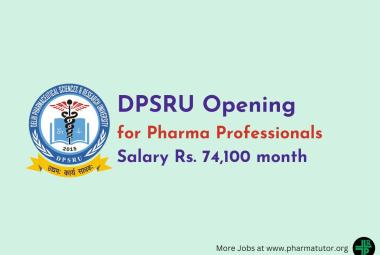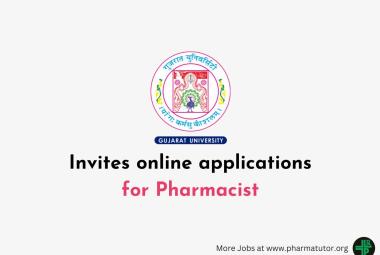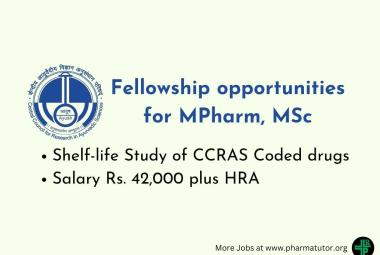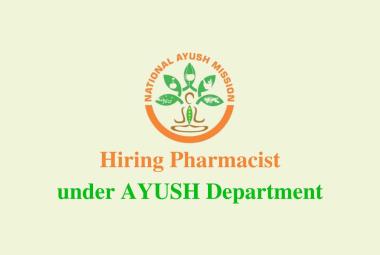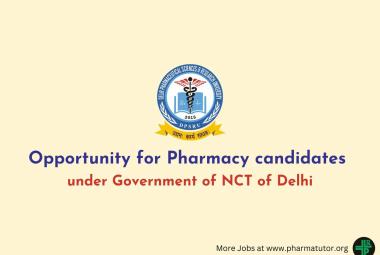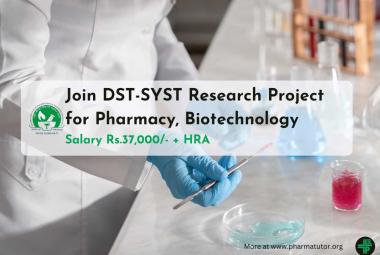ABOUT AUTHORS:
M.V. Chavan1*, T.T.Mahajan2, M.B. Chaudhari1, N.N.Chavan1
1H. R. Patel Institute of Pharmaceutical Education and Research, Shirpur, District-Dhule (M.S), India.
2R.C.Patel Institute of Pharmaceutical Education and Research, Shirpur, District-Dhule (M.S), India
milindvc24@gmail.com
ABSTRACT
In present work mixed solvency concept was used for solubility enhancement of poorly water soluble drug. Aqueous blends of hydrotropes, cosolvents and water soluble solids were used as solvent for poorly water soluble model drug zaltoprofen. In mixing solvency above additives are mixed in different ratio and their aqueous solution served as solvent for water insoluble drug. These solvent systems have extreme potential of increasing solubility of poorly water soluble drugs. In this research work standard curve of drug in different individual aqueous solution of above mentioned type of substances as well as in their blend were plotted and from the curve, solubility of drug in that solvent system is estimated using excess solute addition method. The results obtained shows that solubility of drug in mixed blend is more as compared to their individual solvent systems.
INTRODUCTION
Solubility is of fundamental importance in a large number of scientific disciplines and practical applications, ranging from ore processing, to the use of medicines, and the transport of pollutants. In pharmaceutical field it is important to convert poorly water soluble drug to their water soluble form because water insoluble drug faces lot of problems during formulation development step. There are number of methods of enhancing water solubility of drug. One of them is mixed solvency, using different water soluble substances like hydrotropes1-7, cosolvents,8-11 solubility of drug can be increased. Mixed solvency refers to the use of various water soluble additives together to increase water solubility of poorly soluble drug. Different additives used are propylene glycol, poly ethylene glycol 600, PEG400, PEG4000, PEG 6000, Glycerin, sod citrate, urea, sod acetate. It was observed that solubility of drug was increased in several folds compared to individual aqueous solution of solublizers12-15. The 5% solutions of different solublizers were prepared in water and solubility of drug in respective solution was estimated and same process was followed with blend of solublizers in water. It was observed that individual solublizer solution in water 16-18.
MATERIALS AND METHOD
Zaltoprofen was obtained as a gift sample from Tonira Pharma Limited, Ankleshwar. All chemicals used are of analytical grade and procured from Loba chemie Pvt Ltd, Mumbai, Shimadzu UV/visible spectrophoto meter (U V 1800) was used for analysis of samples
Preparation of standard/calibration curve:
Initially prepare 100 ppm solution of drug in 5% aqueous solutions of solublizers. Above solutions were allowed to sonicate in bath sonicator for 480 sec at ambient room temp and condition. From resultant stock solutions dilutions of 1, 2, 3,4,5,6 ppm were prepared using respective aqueous solution of solublizers in which drug was firstly dissolved. The solution with highest concentration was scanned between 400-200 nm. The lambda max of drug was found to be 240 nm and finely observed for linearity over 1-6 µg/ml
Solubility determination of drug:
Solubility determination of zaltoprofen in different solublizers and their mixed blend were carried out at NTP. Drug was added successively in glass vial of 10 ml capacity containing aqueous solutions of solublizers until drug precipitates out of solution. The vials are sealed and placed in orbital flask shaker for 24 hours. Vials are then equilibrated for further 3 hours and centrifuged for 5 min at 2000 rpm. Supernant was filtered through whatmann filter paper. Filtrates were diluted and analyzed spectrophotometrically for determination of solubility.
Table 1: Observed solubility of drug in different aqueous solution of solublizers
Sr. no Composition Solubility(mcg/ml)
1 distilled water 0.005
2 sodium citrate (5%) 1.428
3 sodium acetate (5%) 3.644
4 urea (5%) 7.439
5 PEG 400 (5%) 4.613
6 PEG 600 (5%) 9.222
7 PEG 4000 (5%) 4.354
8 PEG 6000 (5%) 2.424
9 propylene glycol (5%) 7.343
10 glycerin (5%) 2.466
Table : Observed solubility of drug in different blends
B= sodium citrate (1%) + urea (1%) + propylene glycol (1%) + PEG 400 (1%) + PEG 600 (1%)
C=PEG 4000 (1%) + PEG 6000 ( 1%) + glycerin (1%) + sodium acetate (1%) + urea (1%)
D= glycerin (1%) + sodium acetate (1%) + PEG 400 (1%) + urea (1%) + PEG 4000
( 1%)
E=PEG 6000 (1%) + PEG 600 (1%) + sodium citrate (1%) + glycerin (1%) + propylene glycol (1%)
Sr no Blend solubility(mcg/ml)
1 A 17.371
2 B 32.169
3 C 14.656
4 D 11.564
5 E 16.845
Where,
A= sodium citrate (1%) + sodium acetate (1%) + urea (1%) + propylene glycol (1%) + PEG 400 (1%)
RESULTS AND DISCUSSION
From Fig 1 it is evident that there was increased in solubility of drug in all aqueous solutions of solublizers compared with distilled water and maximum increase in solubility was found with 5% urea and 5% PEG 600.
From Fig 2 it was observed that mixed blend of solublizers shows tremendous increase in solubility of drug and best composition observed was A & B
CONCLUSION
From above study it was cleared that mixed blend of solublizer have extreme potential of increasing solubility of poorly water soluble drug compared to individual solublizer.
ACKNOWLEDEMENT
Authors are thankful to HRPIPER principal and management for encouraging this research work.
REFERENCES
1.Shah SP, Flanagan DR. Solublization of salicylamide and acetaminophen by antihistamine in aqueous solution. J Pharm Sci 1990; 79: 889-92.
2.Poolchikian JK, Crudock JC. Enhanced Chartreusin solubility by hydroxybenzoate hydrotropy. J Pharma Sci. 1979; 68: 728-32.
3.Maheshwari RK, Chaturvedi SC, Jain NK. Application of hydrotropic solublization in spectrophotometric analysis of hydrochlorothiazide tablet. Indian Drugs. 2005; 42: 541-4.
4.Maheshwari RK. Mixed hydrotropy in spectrophotometric analysis of acceclofenac. Indian Pharmacist. 2007; 6: 67-9.
5.Maheshwari RK. New application of hydrotropic solublization in spectrophotometric estimation of ketoprofen in tablet dosage form. Pharma Rev. 2005; 3: 123-5.
6.Maheshwari RK. Application of hydrotropic solublization phenomenon in spectrophotometric estimation of norfloxacin in tablet dosage form. Indian J Pham Edu Res. 2006; 40: 237-40.
7.Maheswari RK. Novel application of hydrotropic solublization in spectrophtometic analysis of tinidazole in dosage form. Asian J Chem. 2006; 18: 640-4.
8.Breon TL, Paruta AN. Solubility profile of several barbiturates in hydroalchoholic mixture. J Pham Sci. 1970; 59: 1306-14.
9.Martin A, Newburger J, Adjei A. Extended Hidebrand solubility approach: solubility of theophyline in polar binary solvents. J Pharm Sci .1991; 80: 479-83.
10.Paruta AN. Solubility profile of antipyrine and aminopyrine in hydroalcoholic solutions. J Pharm Sci. 1967; 56: 1565-9.
11. Paruta AN. Solubility of paraben in ethanol-water mixtures. J Pharm Sci. 1969; 58: 364-66.
12.Mukhargee Sumantra, Patel Piyush, Patel Akshay, Patel Harnish, Patel Priyanka. A review on solubility enhancement techniques. International J Pharm Res Bio Sci. 2012. Vol 1.
13.Maheshwari R K. “Mixed-Solvency” A novel concept for solublization of poorly water soluble drug. J Tech and Engi Sci. 2009. Vo11. No1.39-4.
14.Tummar J M. A review on hydrotropy: A novel concept for solubility enhancement. International J Pharma research and development. 2012; Vol4 (5): 103-10
15.Maheshwari R K, Rajgopalan R. Formulation and evaluation of tinidazol syrup made by mixed solvency concept - technique. Der Pharmacia Lettre. 2011; 3(60):266-1.
16.Maheshwari R K, Rajgopalan R. Formulation and evaluation of paracetamol syrup made by mixed solvency concept. Der Pharmacia Lettre. 2012; 4(1): 170-4.
17.Maheshwari R K.” Mixed solvency approach”- Boon for solublization of poorly water soluble drug. Delving Journal of technology and engineering sciences. 2009; 1:39-3.
18.Maheshwari R K. The Indian Pharmacist.2009; 8: 81
NOW YOU CAN ALSO PUBLISH YOUR ARTICLE ONLINE.
SUBMIT YOUR ARTICLE/PROJECT AT articles@pharmatutor.org
Subscribe to Pharmatutor Alerts by Email
FIND OUT MORE ARTICLES AT OUR DATABASE



